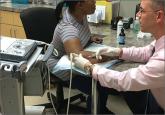Practice Alert

ACIP weighs in on meningococcal B vaccines
Although not recommended for routine vaccination, either of the 2 approved MenB vaccines may be considered by individuals 16 to 23 years of age,...
John Hickner, MD, MSc
Editor-in-Chief

While some physicians prefer a narrower clinic focus, the wide variety and complexity of the care provided by family physicians is precisely what drew many of us to the specialty. We enjoy caring for patients of all ages who see us for the diagnosis and treatment of acute illnesses, management of chronic diseases, preventive care, and behavioral and mental health concerns.
The quantity, variety, and complexity of the care we provide has been well-documented in the literature. In a study performed by the Wisconsin Research Network,1 29 family physicians reported addressing an average of 3.05 problems per patient during 572 office visits. A chart review confirmed physician self-report: 2.82 problems were recorded on average for each visit. For patients older than age 65, an average of 3.88 problems were addressed at each visit. For patients with diabetes, the average was 4.60.
Using data from the 2000 National Ambulatory Medical Care Survey, Katerndahl et al2 estimated the complexity of patient encounters in family practice, cardiology, and psychiatry. They used a formula that took into account the per-patient number of reasons for each visit, diagnoses, and body systems examined, and the variability and diversity of each of these factors. After adjusting the results for length of visit, they found the complexity of care provided per hour by family physicians was 33% higher than that of cardiologists and 5 times higher than that of psychiatrists.
The topics in this issue are a terrific illustration of the breadth of family medicine. Peripheral neuropathy, which we see almost daily, is difficult to diagnose and treat. Prolotherapy is an up-and-coming dextrose injection therapy for tendinopathies and joint pain that shows promise, and patients are likely to start asking us about it. Home apnea monitors are used frequently for newborns—but how effective are they, and when can you tell parents to discontinue their use?
The complexity of care provided per hour by family physicians is 33% higher than that of cardiologists and 5 times higher than that of psychiatrists.
It seems that vaccine recommendations change every year, and this issue’s Practice Alert covers the latest on meningococcal immunization. This month’s PURL answers the question: Do we really need to “bridge” patients with atrial fibrillation from warfarin to low molecular weight heparin immediately before and after a surgical procedure?
The authors and editors of The Journal of Family Practice constantly strive to bring you the most up-to-date information to support your work as a master of the complexity of primary care practice.

Although not recommended for routine vaccination, either of the 2 approved MenB vaccines may be considered by individuals 16 to 23 years of age,...

Skipping perioperative use of LMWH in low- and moderate-risk patients on warfarin for atrial fibrillation doesn’t increase their risk of stroke or...

Prolotherapy appears to be effective for Achilles tendinopathy and knee osteoarthritis, but has limited efficacy for low back pain. Find out when—...

Premature newborns are frequently discharged with a home apnea monitor. The following guidance can help you to counsel parents in 3 common...

Leg paresthesias can be challenging to evaluate because of the varied causes and clinical presentations. This diagnostic guide with at-a-glance...
